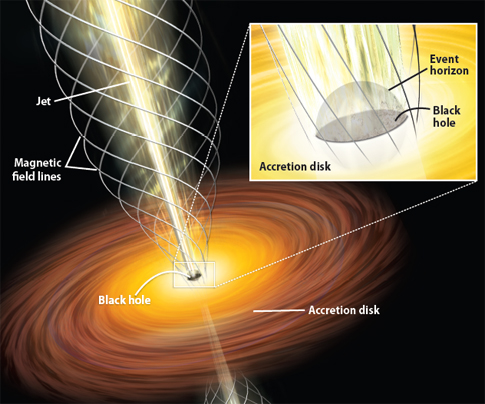event horizon

Artist's concept of a black hole and its accretion disk. When material in the accretion disk spirals toward the center, gas and dust collide. Friction heats this material, making it shine brightly. The powerful jets associated with black hole originate from just outside the black hole's event horizon. These jets align themselves with the black hole's magnetic field, perpendicular to the accretion disk.
The event horizon is the boundary surrounding a black hole from within which it is impossible for matter or energy to escape the black hole's gravitational pull, i.e., the escape velocity at the event horizon is greater than the speed of light. The event horizon is also the radius to which a spherical mass must be compressed in order to transform it into a black hole, and the radius at which space and time switch properties.
Once inside the event horizon, radiation or matter cannot escape to the outside world. Furthermore, in the case of a Schwarzschild black hole, nothing can prevent a particle from hitting the singularity in a very short amount of time (as measured by an external observer) once it has entered the horizon. In this sense, the event horizon is a point of no return. The case of a Kerr black hole is different, however. Here there are two event horizons, an inner and an outer, and a ring singularity which, in principle, can be avoided.
If the material of Earth were squashed hard enough to make a black hole, its event horizon would be about 2 centimeter in diameter. A star with 10 times the mass of the Sun would form a black hole with an event horizon about 64 kilometers across. Compare with apparent horizon.


